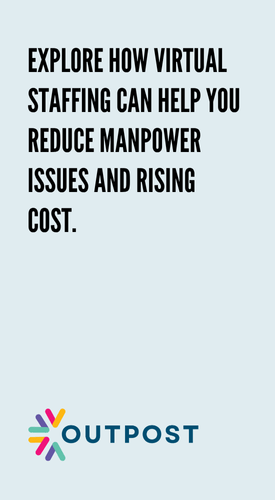A bad hire won’t just waste your time—it can quietly damage your clinic’s reputation.
The receptionist doesn’t need to make a big mistake. A slow reply. A confusing tone. A mix-up with scheduling. That’s enough to make patients lose confidence and go elsewhere.
A virtual medical receptionist in Singapore can absolutely work—if you set things up the right way. The virtual medical receptionist Singapore can keep your operations lean and responsive, but only if you avoid the common mistakes that lead to poor results.
Here’s what to watch out for before, during, and after you outsource.
1. Not Being Clear About What You Actually Need Help With
The biggest issue? Not defining the job. Telling someone you need “admin help” or “reception support” is too vague.
You need to list the exact tasks to delegate, like:
- Booking and confirming appointments
- Answering patient calls and messages
- Sending reminders
- Following up on no-shows
- Updating patient records
When your expectations are clear, it’s easier to hold someone accountable—and easier for them to succeed.
2. Hiring Based on Cost Instead of Fit
If you’re only comparing rates, you’ll end up with someone who doesn’t understand how a clinic works.
Some virtual assistants are great at admin—but healthcare requires more. You need someone who knows how to handle patient conversations, protect data, and communicate like part of a medical team.
That’s one of the most important considerations before hiring. Always ask about healthcare experience. And don’t skip reference checks if you’re hiring on your own.
Some clinics working with Outpost request receptionists who’ve worked in GP or dental settings before, which makes the learning curve shorter.
3. Ignoring Cultural Fit and Local Communication Style
The right hire still needs the right context. If they don’t understand how Singapore clinics operate or how local patients think, you’ll feel it in every interaction.
That’s why training for local healthcare matters more than people realise. Your receptionist should:
- Be familiar with terms like MediSave, CHAS, and subsidy referrals
- Know how to confirm appointments clearly and politely
- Sound confident—even in short WhatsApp replies
- Avoid common miscommunications across language differences
You don’t need perfection. But they should feel like they belong in your team, not just attached to it.
4. Skipping a Proper Onboarding Process
Don’t assume a capable hire will “figure it out.” The best way to set someone up to fail is to rush their start.
Your onboarding doesn’t have to be complicated, but it should cover:
- How your clinic handles calls, messages, and bookings
- Which tools they’ll use and how to access them
- What to say—and what not to say—when speaking on your behalf
- Who to contact when they’re unsure
5. Hoping They’ll “Figure Out” Your Tech Stack
You know your software inside out—but they don’t.
Take 20 minutes to walk them through:
- Your phone system (how calls get answered, forwarded, and logged)
- Your calendar setup (slot lengths, buffers, breaks)
- Your EHR (what they can update vs. view only)
- Where to leave internal notes or appointment remarks
They’ll be faster and more accurate from day one. And you won’t spend the next two weeks fixing mistakes caused by guessing.

6. Expecting One Person to Do Everything
A virtual medical receptionist can do a lot—but they still can’t be there physically.
You’ll still need your in-person team for:
- Welcoming walk-ins
- Collecting payment at the counter
- Helping elderly patients with forms
- Managing physical files or supplies
The goal isn’t to replace—it’s to support. Your virtual receptionist should handle what they can fully own, so your on-site team can focus where they’re most needed.
7. Leaving Communication Loosely Defined
If you don’t define how you’ll stay in touch, you’ll end up with silence—or micromanagement.
Set simple rules:
- Where updates go (Slack, WhatsApp, shared doc)
- What counts as urgent
- When to check in
- Who to escalate to when they get stuck
Many clinics working with Outpost do a quick check-in twice a week. It’s enough to stay aligned without slowing everyone down.
8. Holding Back Feedback Until Things Go Wrong
Even great hires need guidance. Don’t wait for something to break before speaking up.
Instead:
- Give small notes daily in the first week
- Share examples of what “good” looks like
- Record ideal calls or messages if you can
- Ask for their input—they’ll spot gaps you’ve overlooked
This builds confidence and avoids repeat mistakes. Silence, on the other hand, usually leads to misalignment.
9. Not Writing Down Your Basic Processes
If everything lives in your head, you’ll spend more time explaining things than getting work done.
Write down:
- How to confirm appointments
- What to say in follow-ups
- Who to call for urgent slots
- When to cancel, rebook, or escalate
You don’t need a full SOP manual. A simple Google Doc or Notion board will do the job.
Conclusion

Outsourcing a virtual medical receptionist can take a real load off your team—but only if you build the setup with care.
The mistakes above aren’t hard to avoid. They just require structure.
Done right, your virtual receptionist becomes more than just help—they become the reason your operations finally feel under control.




